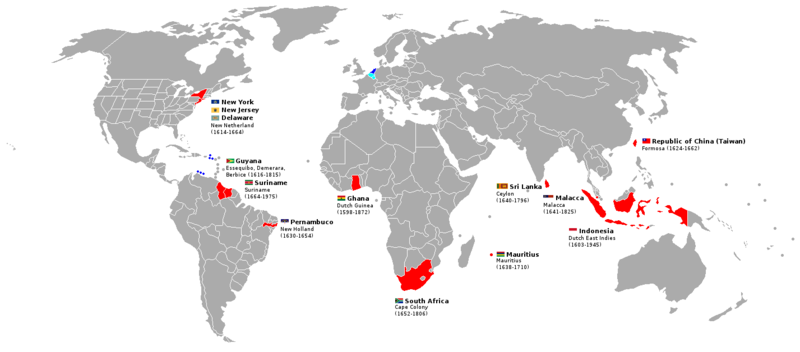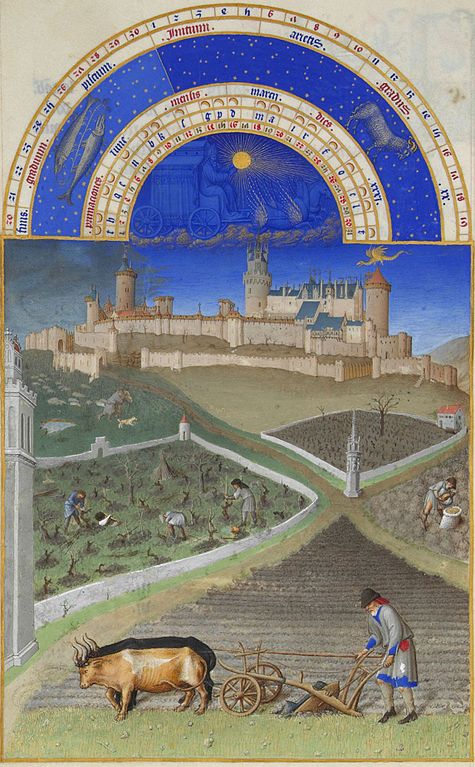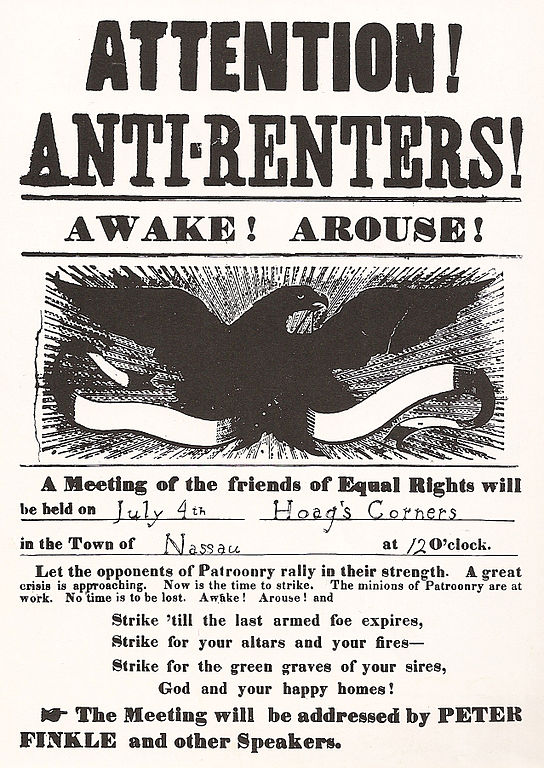
The Munsee tradition of land use sought to produce a cycle of stability. European colonial motivations, conversely, emphasized resource extraction to enrich faraway governments and investors. To serve this profit-driven approach, the Dutch West India Company imported two institutions that would shape the culture of New York for centuries: the European manor system and the enslavement of Africans. Each of these practices would take root, winding their way deeply into the colony’s legal system down to the bedrock structure of New York society.
New York’s manor lords, like the Philipses, accumulated great wealth from the ownership of huge swaths of land, wealth that gave them the power to shape the world to their liking. Their names fill our history books, dominating the politics of the colony even as we have largely forgotten about the great manors they once commanded.
As the manor system faded from popular memory, so too did recognition of the enslaved African labor that supported it. Unlike the names of enslavers like Livingston, Philipse, Van Cortland, and Van Rensselaer, the names and the lives of those in bondage often only appear in bills of sale, in runaway ads, or in lists of property. Though their forced labor helped create New York and the nation, much about the life of the enslaved here has been ignored or overlooked.
You’ll find explorations of these topics in the articles below. These reevaluations reflect new and rediscovered understandings about our past.

When the Dutch first arrived in what is now New York, their foothold was just a small branch of their unparalleled global expansion. The Dutch East and West India Companies’ territories dotted the coastlines of southeast Asia, western and southern Africa, the Caribbean, and both North and South America. In 1624, the establishment of both New Amsterdam (Manhattan) and Fort Orange (Albany) as permanent Dutch settlements kicked off a competition between colonial powers: who could settle, hold, and control the resources of the Americas?

European governments needed to entice more colonists to make the perilous journey to the colonies; territories could not be controlled or defended without human beings in place. The Dutch West India company devised a strategy to speed settlement: they would grant wealthy investors hereditary rights over large tracts of land, as well as legislative and judicial power over all who settled on these patroonships. The lord, or patroon, in return, was required to settle at least fifty people on his land within four years at his own expense. Kiliaen van Rensselaer, a wealthy merchant and board member for the Dutch West India Company, was granted a patroonship in 1630 over his vast landholdings near present-day Albany, founding the first Hudson Valley manor, Rensselaerswijck.
For a time, the importation of the European manor system did attract European settlers and the feudal traditions of this centuries-old system acted as a counterbalance to the democratic rumblings in the New England colonies. The manor lords were granted great power and wealth over their domains by the European governments and, in return, controlled and administrated the colonies on behalf of those governments, ensuring a stable stream of raw goods arriving in European ports. Because of this strategy’s early success in Rensselaerwijck, the manor system was maintained and expanded when Britain gained control of the colony. In quick succession, English-born physician Thomas Pell was granted full manorial rights for Pelham Manor, and Frederick Philipse and Stephanus Van Cortlandt were granted independent patents which would become the heart of their future manors, Philipsburgh and Van Cortlandt. By the end of the seventeenth century, the four great New York manorial estates had been founded: Rensselaerwijck in the north, Pelham on the Long Island Sound, Van Cortlandt near Croton-on-Hudson, and Philipsburg, which spanned twenty-two miles of Hudson River waterfront. In addition, Livingston, Beekman and other manors were granted in the Hudson Valley.

Essential features of the manor system continued from its inception in the Late Roman Empire throughout the European Middle Ages and into its use in the Hudson Valley. Manor Lords needed tenants to settle and improve their vast properties, without which their lands were merely great expanses of forest. The terms of any lease were decided by the Lord of the Manor, although many similar features could be found across the New York manor system. In exchange for access to the land, tenants were typically required to give a portion of their crop yield to the lord as payment. Leases under the Van Rensselaers typically passed to descendants if rent was paid. Leases under the Livingstons offered no such guarantee; if the Lord wanted to, he could evict a tenant after a few generations. And, no matter how many improvements tenants made to the land, improvements which made the land more valuable, the land itself would never be theirs. If the tenant wished to sell his lease to another tenant, a portion of his profit on the sale would go back to the lord, even though all improvements (and thus value added) to the property were made by the tenant and not the lord.

Lords controlled the lives of tenants in other ways. Each manor had a court baron, giving lords the right to hand down administrative, civil, and tenurial judgments to their lessees. Each manor also had a “court leet” for the punishment of small crimes. Frederick Philipse and the other Hudson Valley manorial lords weren’t simply landlords to their tenants; they were the lawmakers and the law enforcers, the judges and the jury. Lords were also often the only business in town. Tenants were usually required to bring their wheat to the manor’s own mill and would be charged a fee for its use. All rights to water, wood, and minerals from the land remained with the patroon. Debts accrued to the lord during life would become the posthumous burden of the tenant’s children.
Much like the aristocracy of Europe, the lords of New York set about consolidating their power through intermarriage. Robert Livingston the Elder, founder of Livingston Manor, married Alida Schuyler, the widow of Nicholas Van Rensselaer. Schuyler was also the daughter of Fort Orange vice-director Philip Schuyler and sister-in-law to Stephanus Van Cortlandt of Van Cortlandt Manor. Frederick Philipse’s adopted daughter Eva De Vries Philipse married the brother of Stephanus Van Cortlandt, whose sister would become Philipse’s second wife Catherine. This tightly knit group of families would play a major role in the political life of the colony as well, holding key positions like mayor of New York City, members of the New York General Assembly, and generals in the Revolutionary War.

What began as a way to stimulate immigration to the colony would eventually be blamed for the perception of New York’s slow population growth, at least compared to the nearby Pennsylvania and New Jersey colonies. Future Lieutenant Governor Cadwallader Colden remarked that the excessive patents granted to the New York lords were the “true reason why it is not near so populous and well cultivated as the neighboring colonies.” Farmers revolts in the 1750s and 1760s were blamed on lords, seen by Colden as “incinerators of social conflict” who imposed unfavorable lease terms on their tenants and held between them three-fourths of the province of New York and seven million acres of land.
A newly arrived British colonist might instead choose the relatively liberal land policies of the neighboring provinces over the near feudal manorial system that controlled much of New York. A tenant farmer in New York, no matter how much land they improved, how many buildings they erected or how many fences they built, would never own the land on which they labored. For many newly arrived colonists, escaping the authority of a European-style lord was the allure of the colonies in the first place.

The great lords of New York who sided with the Revolutionaries would keep their great manors, for a time. Loyalists, like the Philipses, would be forced to give up their property, and the Philipsburgh land was eventually parceled out and sold. However, though the manors of the Livingstons and Van Renssalaers would survive, tenant unrest would grow in the new republic. The construction of the Erie Canal meant that far-flung farms in the west could ship their grain to market more easily, competing with the formerly dominant Hudson Valley wheat industry. The cost of wheat plummeted and many tenant farmers could no longer pay their rent. The resulting debt followed a tenant beyond death, burdening the next generation. Between 1839 and 1845, a series of “rent wars” spread throughout the great Hudson Valley manors. The “Anti-Rent Party” pushed tenant-friendly policies to the forefront of state politics on a wave on populism spurred by a recent economic depression. Very few politicians wanted to be seen as avatars for outdated “feudalism.” By 1850, most of the great manors had changed the terms of their leases and often sold the land to their former tenants outright.


